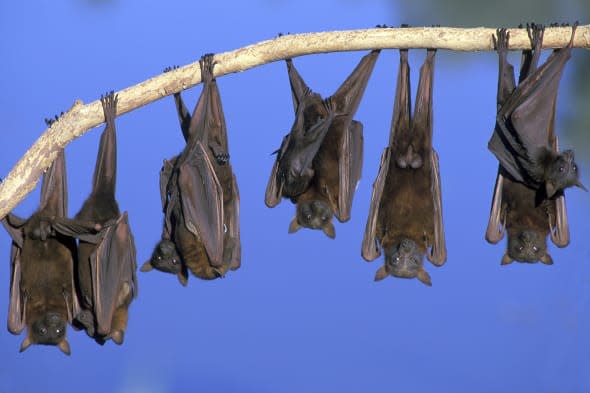Bat study reveals they obey 'airway code'

Bats obey an "airway code" to avoid collisions as they dive and turn at high speed while chasing food, scientists have discovered.
The sonar-based traffic rules ensure there are no accidents as the creatures perform their aerobatic manoeuvres.
Researchers from the University of Bristol studied pairs of Daubenton's bats (Myotis daubentonii) foraging over low water for stranded insects in Somerset.
Analysis of their high-pitched echo-location calls revealed the bats' anti-collision system.
Simulating the creatures' sonar view of their surroundings on a computer showed that the bats swapped leader-follower roles.
The animals performed chases or co-ordinated manoeuvres by copying the heading their leader was using a blink of an eye - 500 milliseconds - earlier.
Lead scientist Dr Marc Holderied said: "The bats seem to have adopted a simple trick: once another individual is close enough for your biosonar to pick up its echo, copy this individual's flight direction within four to five of your own wingbeats."
Co-author Dr Luca Giuggioli, also from the University of Bristol, said: "Quantifying the movement decisions that bats adopt to forage has implications well beyond animal ecology.
"By employing movement strategies that nature has optimised over millions of years, engineers may be able to improve the efficiency of search and rescue missions, monitoring tasks, and surveillance operations in the emerging market of flying drones and autonomous moving vehicles."
The research is published in the journal Public Library of Science Computational Biology.
Related articles
Rescue centre gets cute orphaned baby bats out of a flap
Beautiful photos: ZSL Animal Photography Prize winners revealed
Sea birds can detect fishing boats 13 miles away





